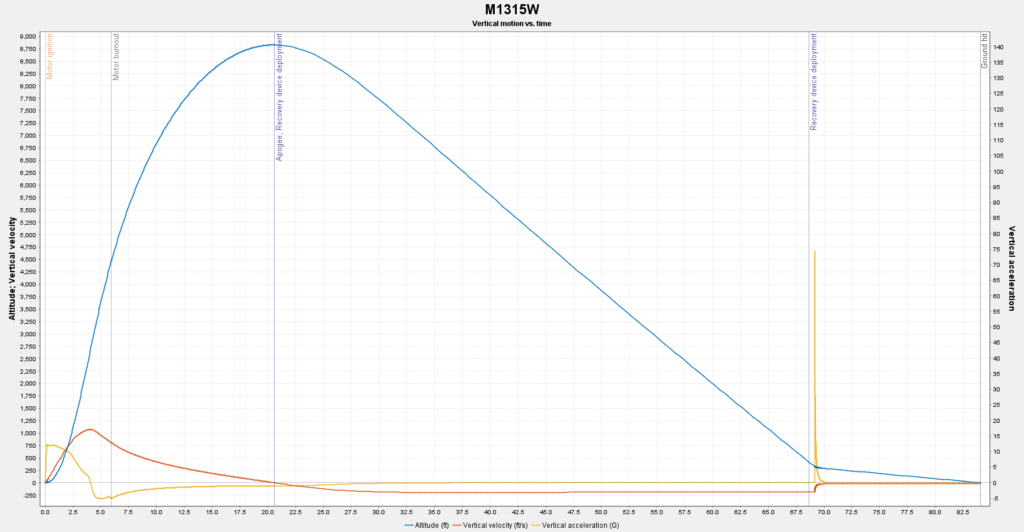UPDATED: 16 December 2024
PROJECT: Tripoli Rocketry Association (TRA) Level 3 Certification Rocket
NAME: ORCUS is named after the Kuiper Belt dwarf planet 90482 Orcus. Orcus was a god of the underworld, punisher of broken oaths in Etruscan and Roman mythology.
TAP Mentors: Ben and Elaine Russell
STRUCTURE

ORCUS will be a simple dual-deployment rocket. It will be 6 inches in diameter, 117 inches long, empty mass about 17 lb, mass with motor about 30 lb (before paint). It will have four fins with a span of about 18 inches.
The body tubes, motor mount, and avionics bay coupler tube will be Blue Tube 2.0. The nosecone will be fiberglass with an aluminum tip. The fins will be 1/4-in G10 fiberglass, with tip-to-tip fiberglass reinforcement. (See the flutter analysis at https://www.kq9p.us/wp-content/uploads/Fin-Flutter-Boundary-Calculator-V1-1.zip.) The centering rings, bulkheads, and avionics sled will be Baltic birch plywood, although I may decide to 3D-print the avionics sled with PETG or ABS. Thrust will be coupled to the body tube using an SC Precision aluminum thrust ring, and motor retention will be achieved using an AeroPack retainer. West System and US Composites epoxies will be used throughout.
The motor mount, centering ring, and fin assembly will be constructed outside the rocket. It will be removable, fastened to the body tube with four machine screws into blind nuts in each centering ring (for a total of 12 machine screws).
PROPULSION
ORCUS will have a 75mm motor mount capable of accepting an AeroTech RMS-75/6400 motor casing. At least one test flight – more, if necessary – will be conducted on a large K/small L motor. The certification attempt will be on an AeroTech M1315W .
RECOVERY
Recovery will be black powder dual deployment using the same flight computers tested and proven in my L2 rocket, “Radio Flyer”. The primary is a Featherweight Blue Raven; the backup is a Missile Works RRC2L. The drogue parachute will be 15”, deployed at apogee. The main parachute will be 60”, deployed at 500 feet AGL. Both will be rip-stop nylon. The recovery harnesses will be tubular Kevlar, 40-50 feet long.
AVIONICS

SIMULATION
The model is built and maintained in OpenRocket. Flight was simulated on an AeroTech M1315W motor.
| Apogee | ~ 8800 ft |
| Caliber at launch | 1.5 – 2.0 |
| Velocity at end of rail | ~ 80 ft/sec |
| Thrust-to-weight at end of rail | ~13:1 |
| Max velocity | ~ 1077 ft/sec |
| Time to burnout | 5.9 sec |
| Time to apogee | 21 sec |
| Descent rate – drogue | ~ 180 ft/sec |
| Descent rate – main | ~ 20 ft/sec |
| OpenRocket file | https://www.kq9p.us/wp-content/uploads/L3-ORCUS-6in-16Dec2024.zip |

SCHEDULE
- November 2024 – review plan with my TAP Members, modify as necessary; order materials;
- December – construct rocket
- January 2025 – deployment tests
- January/February 2025 – test flights at TCV BattlePark (https://battlepark.org/)
- March 2025 – certification flight at Bayboro (http://ncrockets.org/)